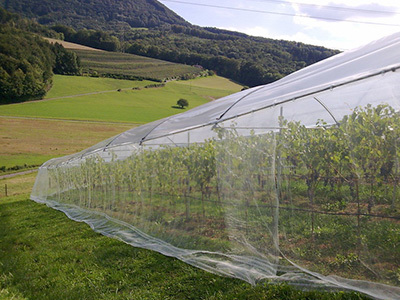How a Quality Protective Cover Enhances the Longevity of Your Farming Tools
How a Quality Protective Cover Enhances the Longevity of Your Farming Tools
Table of Contents
- Introduction: The Importance of Protecting Farming Tools
- Understanding Protective Covers for Farming Equipment
- Benefits of Investing in Quality Protective Covers
- Impact on Tool Longevity and Performance
- Maintenance Tips for Protective Covers
- When to Replace Your Protective Covers
- Conclusion: Investing in Quality for Long-Term Benefits
- FAQs About Protective Covers for Farming Tools
Introduction: The Importance of Protecting Farming Tools
In the agricultural world, maintaining your farming tools is crucial to ensure efficiency and productivity. **Farming tools** are subjected to various elements, including moisture, dirt, and harsh weather conditions, which can significantly shorten their lifespan. Therefore, investing in a quality protective cover is not just an option but a necessity. By shielding your tools from damage, you enhance their longevity, ensuring they serve you well for years to come.
Understanding Protective Covers for Farming Equipment
Protective covers are designed to guard tools against environmental hazards. They can be made from various materials suited for agricultural settings.
Materials Used in Protective Covers
The efficacy of a protective cover greatly depends on its material. Common materials include:
- **Polyester:** Known for its durability and resistance to UV rays, polyester is often used in outdoor settings.
- **Vinyl:** This waterproof material protects against moisture and is easy to clean.
- **Canvas:** A breathable fabric that offers excellent protection against dust and dirt while allowing moisture to escape.
- **Nylon:** Lightweight and strong, nylon covers are suitable for tools that require frequent handling.
Selecting the appropriate material is essential for achieving maximum protection.
Types of Protective Covers
Various types of protective covers cater to different tools and equipment. Some common types include:
- **Full Tool Covers:** Designed to fit over the entire tool, these covers offer the highest level of protection.
- **Tool Bags:** Ideal for smaller tools, these bags provide a convenient way to transport and protect your equipment.
- **Custom-Fit Covers:** Tailored to specific tools, these covers ensure a snug fit and maximum protection.
Choosing the right type is crucial to safeguarding your investment.
Benefits of Investing in Quality Protective Covers
Investing in high-quality protective covers provides several benefits:
- **Extended Lifespan:** Quality covers shield tools from environmental factors, preventing rust and degradation.
- **Cost-Effective:** By reducing the need for frequent replacements, protective covers save you money in the long term.
- **Improved Performance:** Well-maintained tools perform better, leading to increased productivity and efficiency.
- **Convenience:** Covers make it easier to store and transport tools, keeping them organized and accessible.
The benefits of investing in quality protective covers far outweigh the initial cost.
Impact on Tool Longevity and Performance
The longevity of farming tools directly correlates with the protection they receive. Quality protective covers can prevent:
- **Corrosion and Rust:** Moisture exposure can lead to rust, which weakens metal components. Protective covers act as a barrier.
- **Physical Damage:** Covers prevent scratches and dents during storage or transport.
- **Contamination:** Dust and dirt can degrade the quality of tools over time. Protective covers keep them clean and operational.
By addressing these concerns, protective covers ultimately enhance the durability and performance of your farming tools.
Maintenance Tips for Protective Covers
To maximize the lifespan of your protective covers, regular maintenance is essential. Here are some tips:
- **Regular Cleaning:** Remove dirt and debris to prevent mold and mildew from forming. Use mild soap and water for cleaning.
- **Inspection:** Periodically check for tears or wear and replace covers as needed to maintain optimal protection.
- **Proper Storage:** Ensure covers are stored in a dry, cool place when not in use to prevent damage.
Following these maintenance tips ensures your protective covers remain effective.
When to Replace Your Protective Covers
Knowing when to replace your protective covers is vital. Signs that it's time for a replacement include:
- **Visible Damage:** Any tears or holes that compromise the cover's integrity.
- **Faded Material:** UV exposure can degrade materials, reducing their protective capabilities.
- **Odor or Mold:** Persistent odors or mold growth indicate that the cover has absorbed moisture and is no longer effective.
Replacing covers at the right time protects your tools and ensures continued performance.
Conclusion: Investing in Quality for Long-Term Benefits
In conclusion, investing in **quality protective covers** for your farming tools is a prudent decision that pays off in the long run. By safeguarding your tools from environmental hazards and physical damage, you enhance their longevity and performance. With the right materials and proper maintenance, you can ensure your farming tools remain in top condition, enabling you to work efficiently and effectively. Don’t overlook this essential aspect of tool care; it’s an investment in the future of your agricultural success.
FAQs About Protective Covers for Farming Tools
1. What are the best materials for protective covers?
The best materials include polyester, vinyl, canvas, and nylon. Each material offers different benefits, such as waterproofing and UV resistance.
2. How do I clean my protective covers?
Use mild soap and water to clean your protective covers. Ensure they are thoroughly dried before storage to prevent mold growth.
3. How often should I replace my protective covers?
Replace covers when you notice visible damage, fading, or persistent odors. Regular inspections will help you determine the right time for replacement.
4. Can I use protective covers indoors?
Yes, protective covers can be used indoors to shield tools from dust and accidental damage.
5. Do protective covers affect tool performance?
Yes, by keeping tools clean and free from damage, protective covers can significantly improve their performance and longevity.
Key words:
Related News
11-01
10-31
CONTACT US
Email: sales8@meyabond.com
Tel: +8618911966213
No.3 Yard, ZhongHe Road, 100071,FengTai District, Beijing, China
Email: sales8@meyabond.com
Tel: +8618911966213
No.3 Yard, ZhongHe Road, 100071,FengTai District, Beijing, China
















